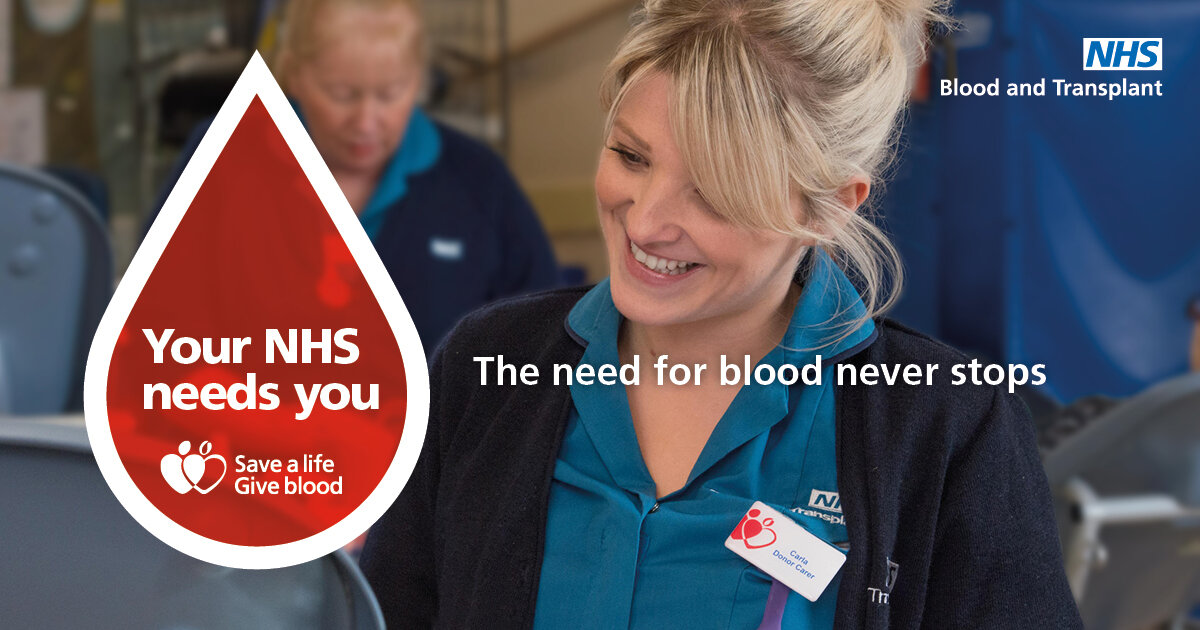It's in the blood
Everything you need to know about donating blood through NHS Blood and Transplant.
Source: nhsbt.nhs.uk
SPONSORED CONTENT
Who are NHS Blood and Transplant?
NHS Blood and Transplant (NHSBT) are a special health authority that provides a blood and transplantation service to the NHS. This includes managing the donation, storage and transplantation of blood, organs, tissues, bone marrow and stem cells - as well as researching new treatments and processes. It was established in October 2005 following the merger of two separate NHS agencies: UK Transplant and the National Blood Service.
Why should I donate blood?
Every day, thousands of people’s lives are saved or improved thanks to the generosity of blood donors. As a donor, your blood may be blue-lighted to an emergency such as a traffic collision or transfused to a cancer patient or a mother who has just given birth.
According to NHSBT, there is a need for:
Nearly 400 new donors a day to meet demand.
Around 135,000 new donors a year to replace those no longer able to donate.
40,000 more Black donors to meet growing demand for better-matched blood.
30,000 new donors with priority blood types such as O negative every year.
More young people to start giving blood to ensure plentiful supplies in the future.
How do I donate blood?
You will first need to complete a short questionnaire to check your eligibility to become a donor. This is to ensure the safety of both you and whoever needs to receive your blood. Once approved, completing your registration is quick and easy. You will then have to book an appointment at one of the 23 blood donation centres across the UK.
Alternatively, there are thousands of temporary community-based venues in towns and villages where you can give blood. These can pop up in various settings such as church halls, sports centres, mosques and football stadiums. They are typically visited two or three times a year but can be more often depending on the number of local blood donors. You can find your local blood donation venue and book an appointment once registered through your account.
What happens on the day of my appointment?
Before your appointment you should avoid vigorous exercise and ensure you are hydrated and well-fed. Upon arrival, you hand over your donor health check questionnaire to the receptionist then drink a glass of water while you wait for your name to be called. Next, you will have a private health screening to confirm your identity and to ensure it is safe both for you to donate blood and for someone to receive yours. This involves a quick test to determine the levels of haemoglobin (iron) in your blood.
Following health screening, you will be called to a donation chair where, at first, a blood pressure cuff is applied to your arm to maintain pressure during your donation. Your arm is then examined by a member of staff to find a suitable vein and cleaned with an antiseptic wipe. Following needle insertion, the blood will drain out slowly and stop automatically when the required 470 ml has been collected - this will take between 5 -10 minutes. You are then advised to help yourself to the complimentary refreshments and drinks offered before heading home. The whole process from arrival to departure should take less than one hour.
Can I still donate blood during the Covid-19 pandemic?
Yes - the demand for blood donors never goes away. To lower the risk of transmission of Covid-19, a number of precautionary measures have been introduced such as the mandatory use of face coverings.

